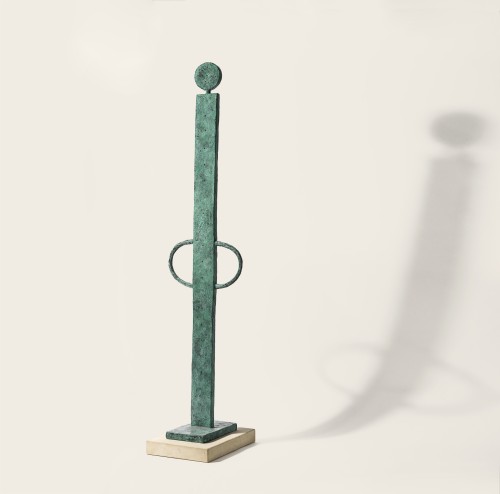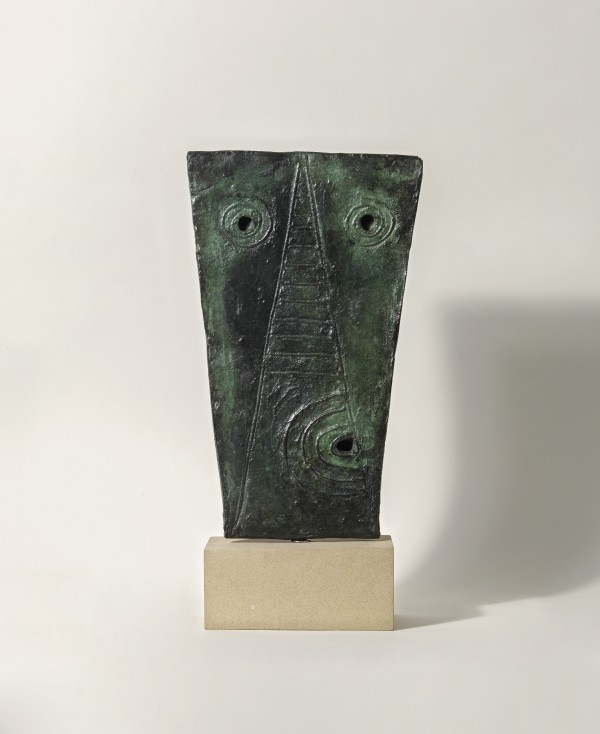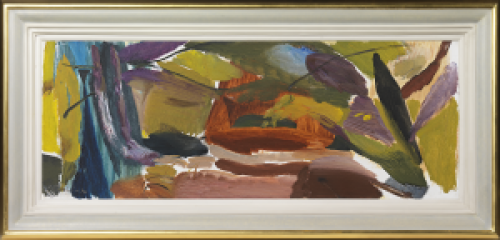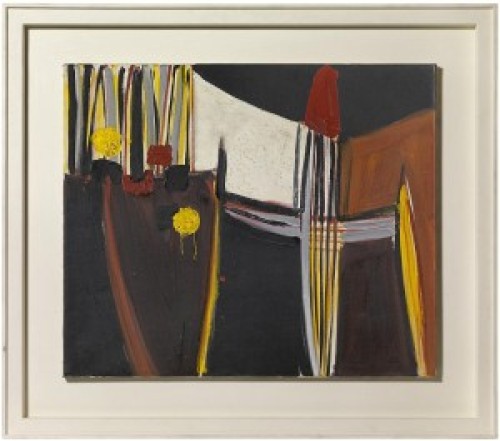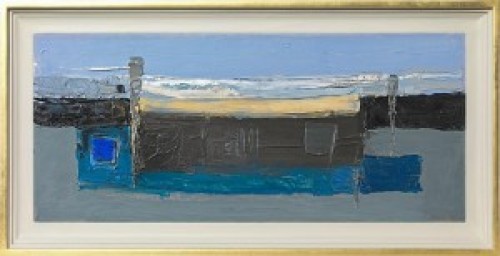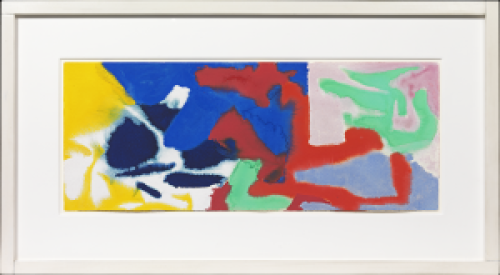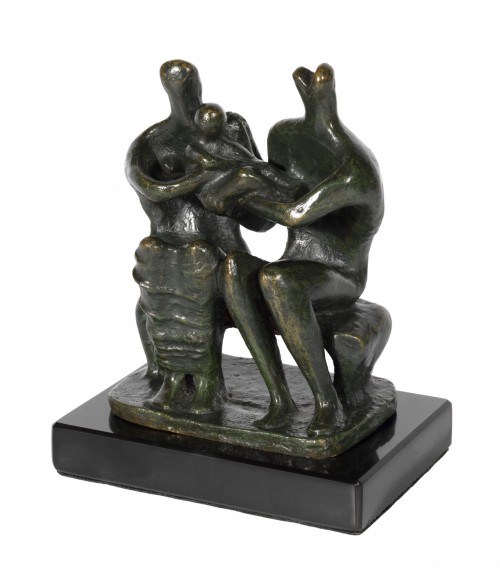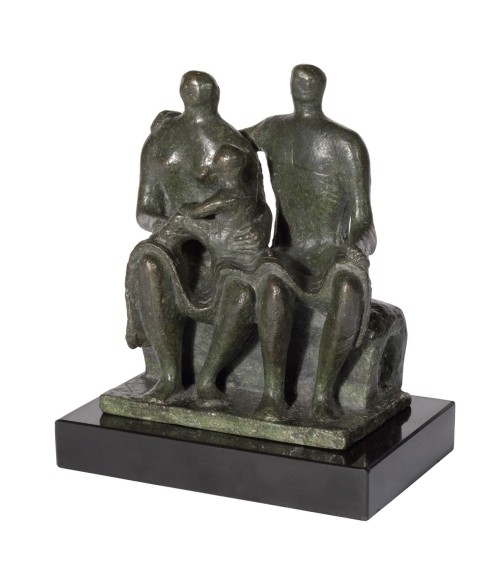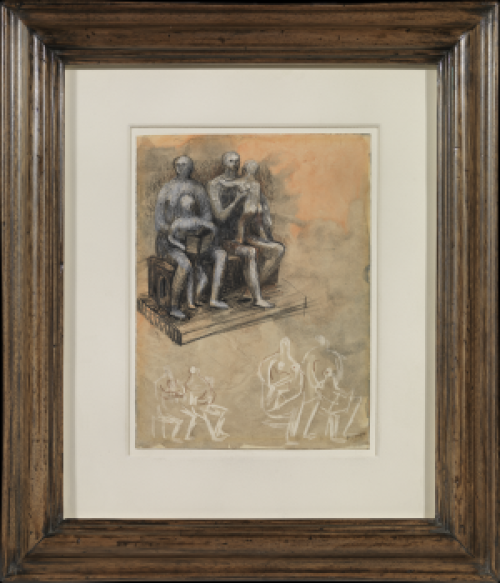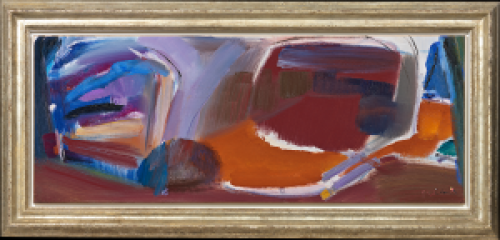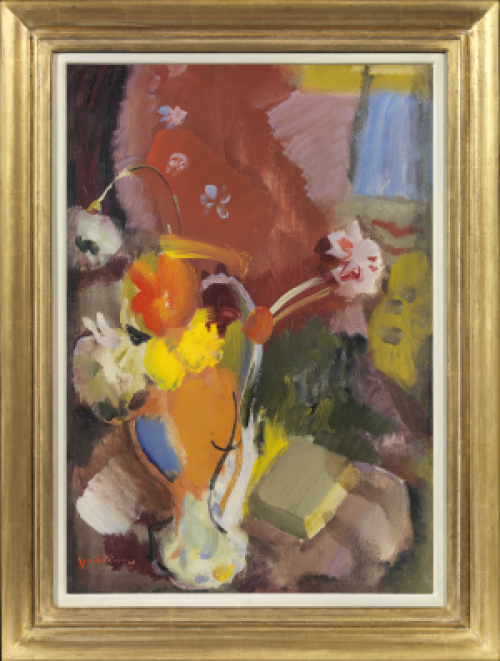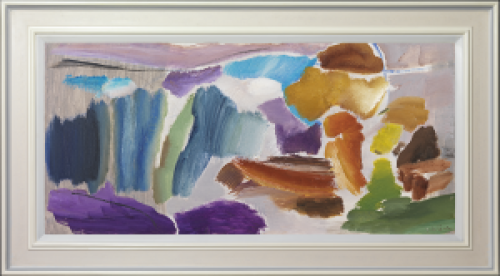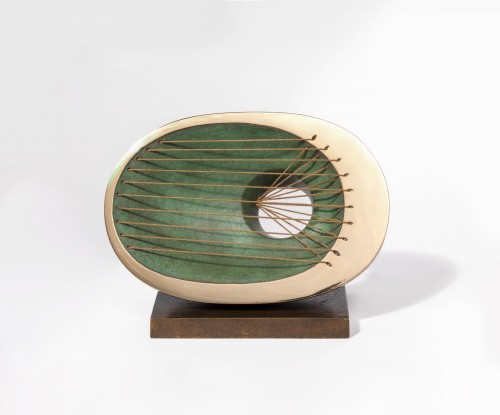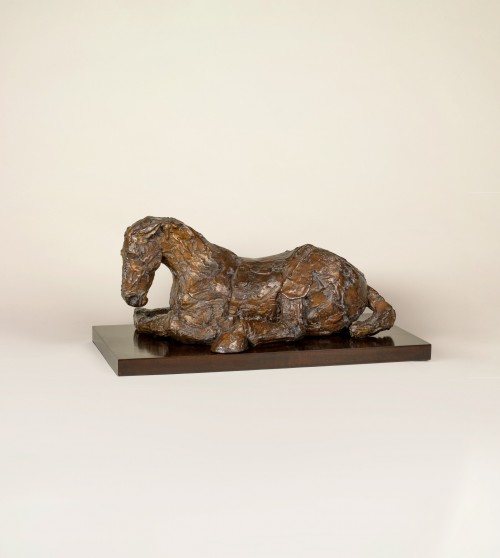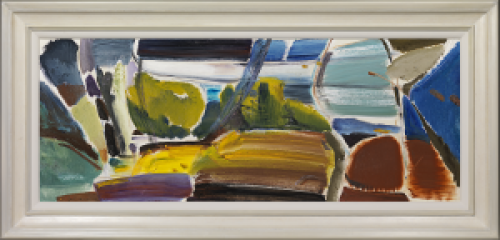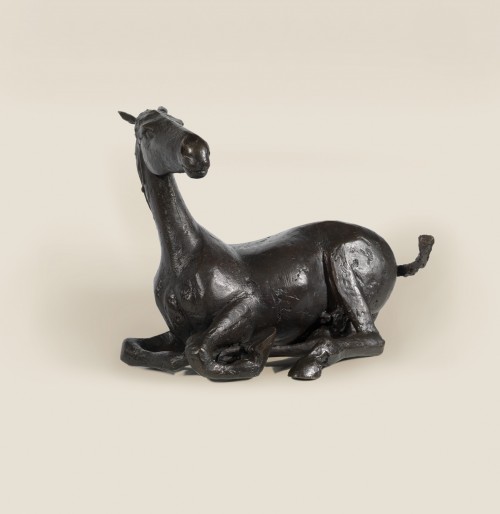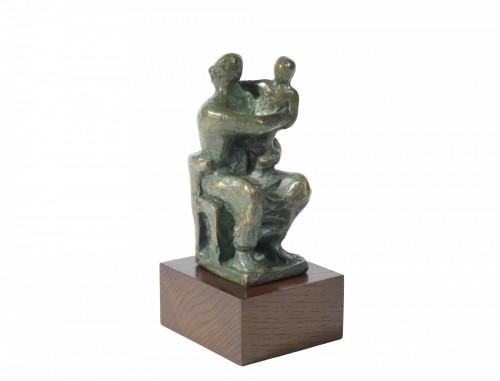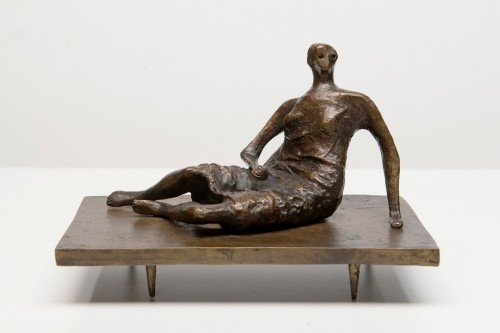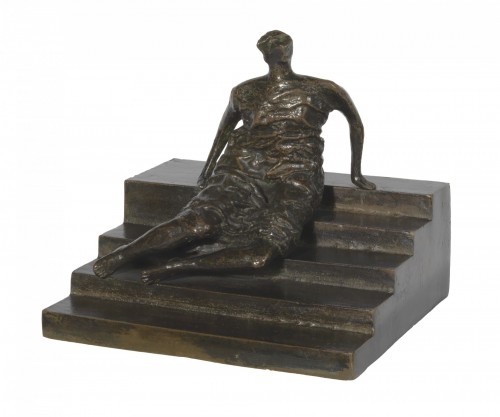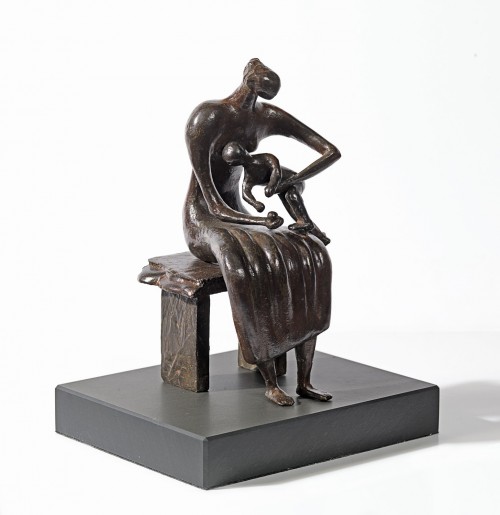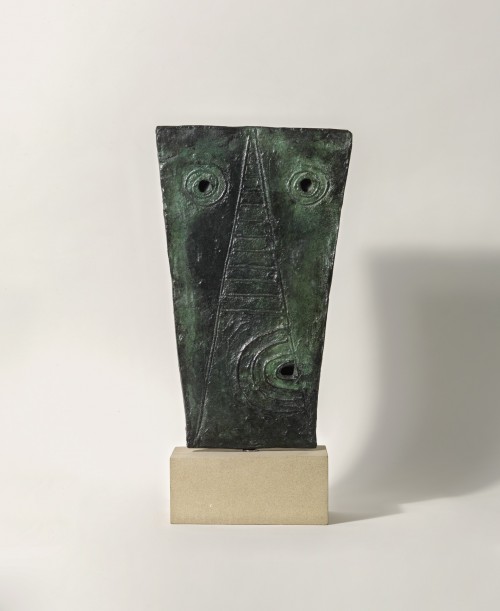WILLIAM TURNBULL
Dundee 1922 - 2012 London
Ref: CA 138
Small female figure
Stamped with monogram, numbered and dated at the back of the base: 5/6 93
Bronze with green patina: 54 ¾ x 12 ¾ x 9 ¾ in /
139.1 x 32.4 x 24.8 cm
On a York stone base: 1 ⅞ x 13 ⅞ x 10 ¼ in /
4.8 x 35.2 x 26 cm
Conceived in 1993 and cast by Livingstone Art Foundry in June 2004 in a numbered edition of 6
Provenance:
Private collection, UK
Exhibited:
London, Waddington Galleries, William Turnbull: Sculptures and Paintings, 24th June-18th July 1998, cat. no. 14, pp.42-43, 86 (another cast)
Literature:
Amanda A Davidson, The Sculpture of William Turnbull, The Henry Moore Foundation in association with Lund Humphries, Aldershot, 2005, no. 290, another cast illus. p.186
In Turnbull’s later archetypal figures, the artist combines his earlier idols with the rectilinear forms and streamlined surfaces of his minimalist steel sculptures of the 1960s and 70s. Turnbull stated, ‘These sculptures had quite a big influence on the bronzes that came: they are very thin, and flat, and have a certain similar configuration.’[1] They also share with Turnbull’s earlier work, such as Idol 4, 1956 (Tate), the idea of frontality and its immediate perception, which the artist recalled ‘was not very current at the time. The prevailing view – I think mainly because of Moore’s way of working – was that sculpture had to be what they call multi-faceted. You went round, and it kept changing all the time. I remember someone telling me that I wasn’t making proper sculpture because mine had front, back and sides. That of course is typical of what is normally called archaic sculpture. It’s certainly not so of classical, baroque or rococo sculpture.’[2] Writing on the artist’s work for the Serpentine Gallery retrospective in 1995, Patrick Elliott commented, ‘Turnbull, like Giacometti, was more concerned with establishing an arresting, frontal image…one which tends to dominate space and radiate out into it.’[3] Turnbull met Alberto Giacometti (1901-66) several times while living in Paris between 1948-50, at a time when ‘Giacometti had begun making his later sequence of elongated figures. Although Giacometti’s figurative work was seen at the time by some of the Surrealists in Paris as a backward step away from Surrealism, Turnbull was excited by these pieces.’[4]
Despite its plane angular shape, the circular top and slender, life-size form of the present work suggests a small, dignified figure standing on the floor close to the viewer. Slightly asymmetric handles or semi-circular arms on either side of the vertical body, recall Turnbull’s small Study for female figure, 1960 which later developed into the large Female figure, 1988 and Female, 1989 and 1990. The fine marks and patterns inscribed onto the variegated surface, also suggest a female figure rather than a completely abstract form. Simple, geometric signs indicate stylised physical features, such as the free-hand vertical lines, like strands of hair, running from the top three-quarters of the way down the reverse of the sculpture, before a horizontal and a vertical line intersect to form a T-shape towards the base. On the front, a series of dots puncture the surface of the body in a straight line from top to bottom, like buttons on a dress. Amanda Davidson explains, ‘The marks often come from the personal vocabulary of symbols that Turnbull has been exploring throughout his career. There are no predetermined public meanings and there is no secret code for the initiated. Some of the marks can be interpreted as indicating faces, hair, limbs and genitals but there can be many interpretations of these marks and the viewer is free to come to their own readings.’[5]
Turnbull’s sculptures frequently refer to both ancient and contemporary sources, invoking everyday objects as well as sacred statues, such as vending machines, pendulums and grandfather clocks (see Screwhead, 1957), allowing him to explore ‘ideas of change and metamorphosis and the relationship between the past, present and future.’[6] His treatment of the sculpture’s surface in terms of texture and colour echo this simultaneous or ambiguous sense of age and modernity. Initially built up in plaster, the texture once cast in bronze has a remarkable vitality in contrast to the stasis of the sculpture, as if the smooth surface has been weathered over time, its beautifully mottled, light green patina, transforming from warm brown to green to grey across the surface and signs.
To celebrate the artist’s centenary this year, Lund Humphries have published William Turnbull: International Modern Artist.
[1] The artist in conversation with Colin Renfrew in William Turnbull Sculpture and Paintings, Waddington Galleries, London, 1998, p.12.
[2] Amanda Davidson, op. cit., p.12. Davidson reveals that despite the artist’s desire to establish his own independent art, Moore and Turnbull got on well. ‘Moore once visited Turnbull to buy one of his sculptures for the British Council and then invited Turnbull to Much Hadham.’ p.23.
[3] Patrick Elliott, ‘A consistent way of thinking’, in William Turnbull: Sculpture and Paintings, exh. cat. Serpentine Gallery, 1995, p.34. Cited in Amanda A Davidson, op. cit., p.36.
[4] Amanda Davidson, op. cit., p.16.
[5] Ibid., pp.65-66.
[6] Ibid., p.63.

